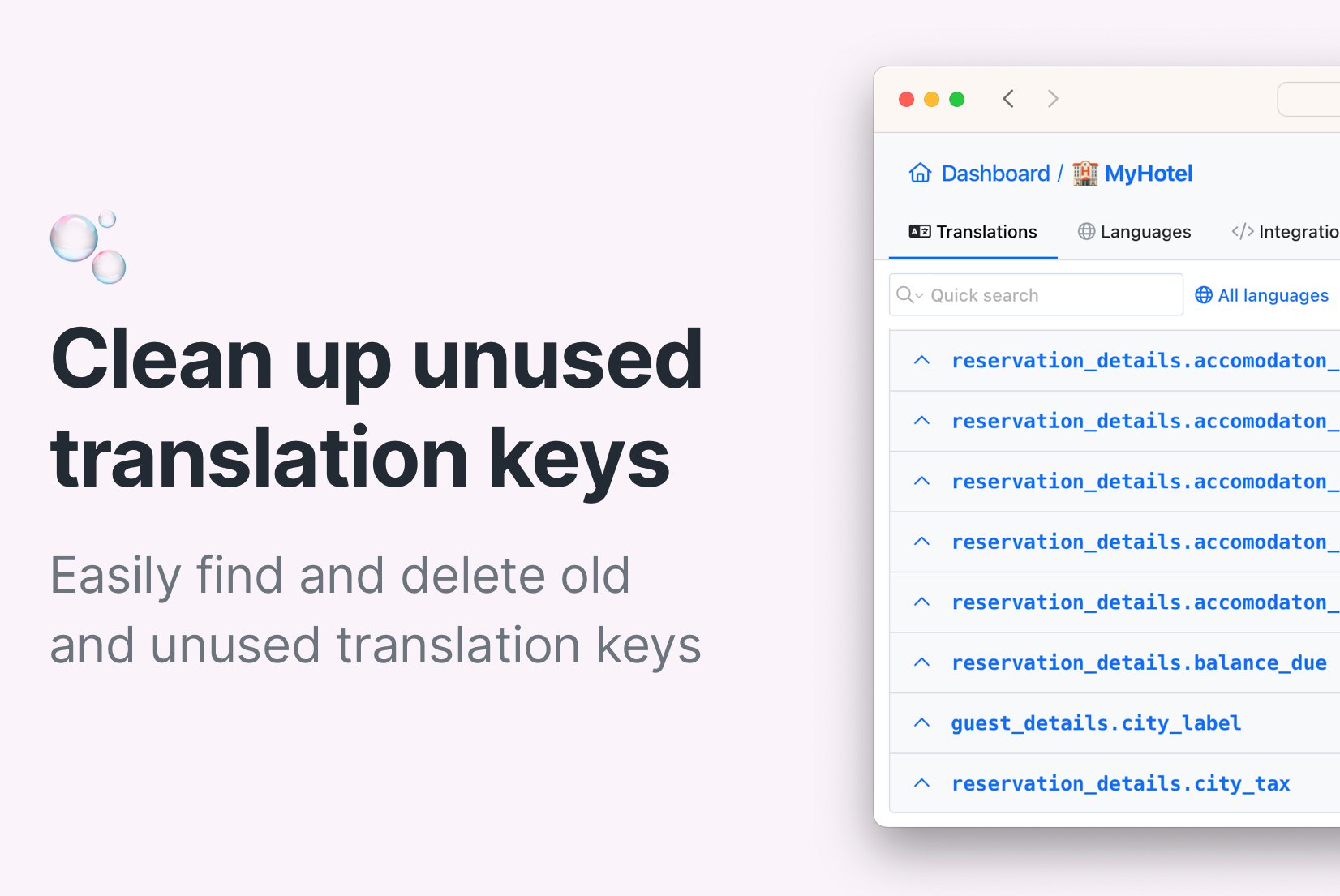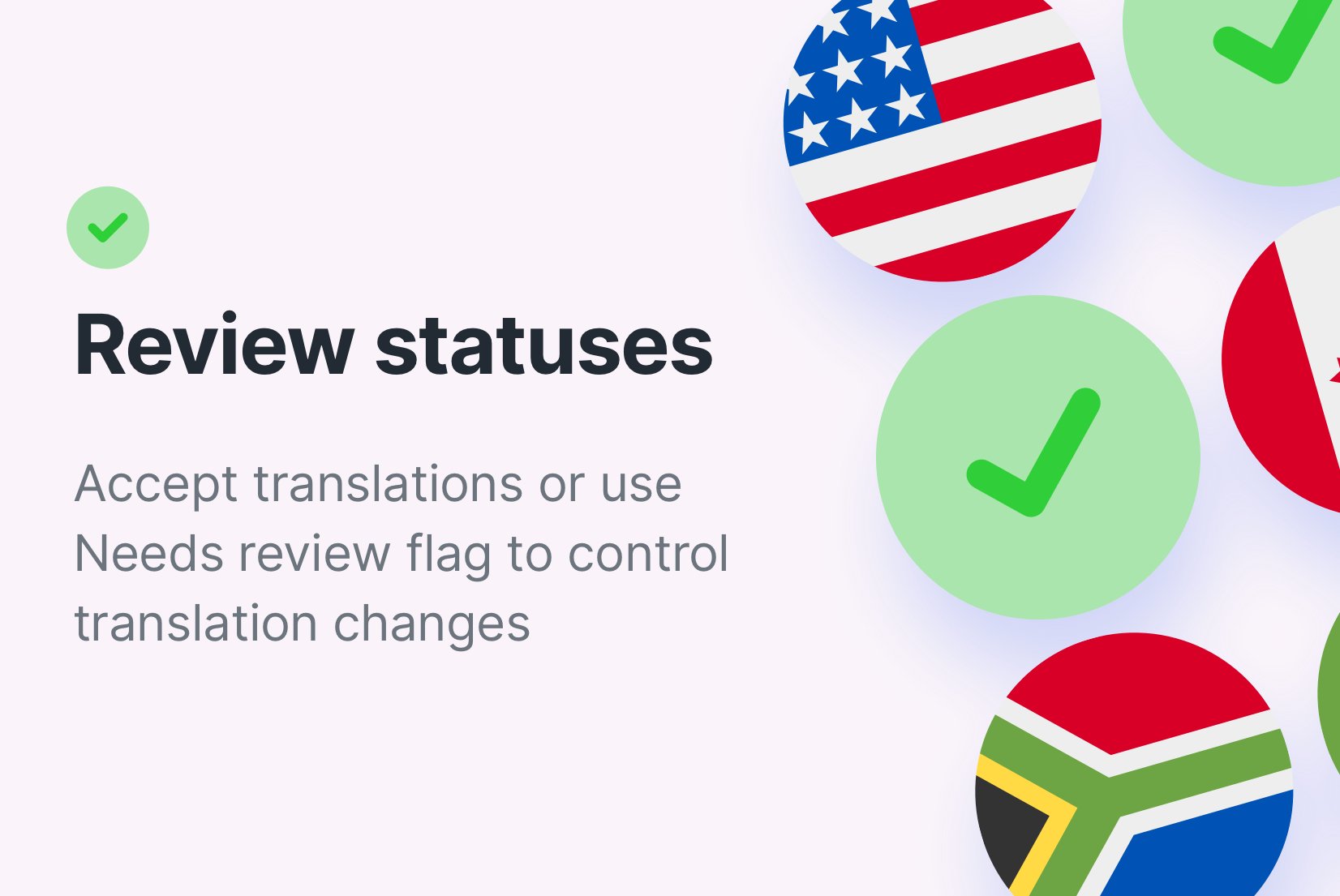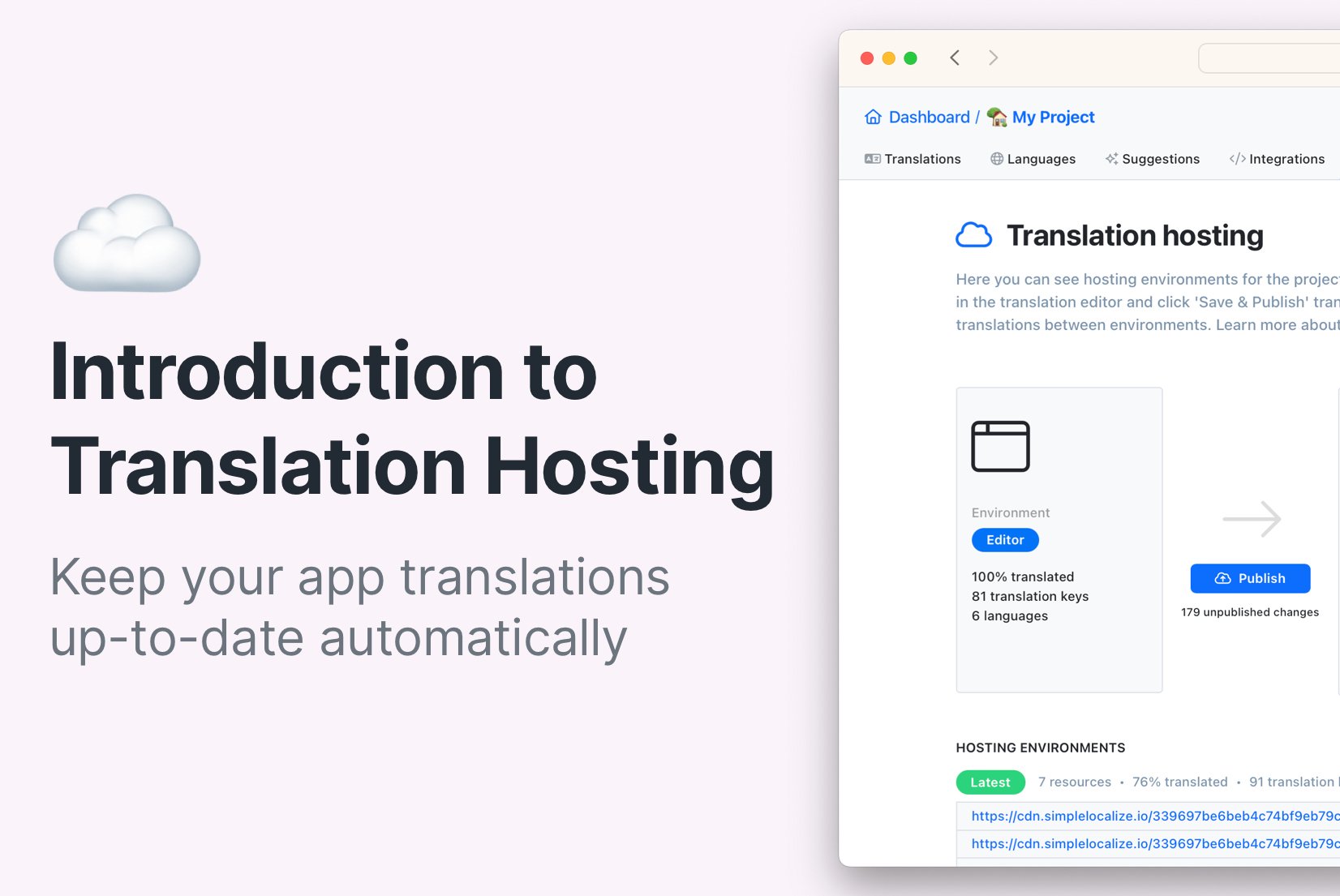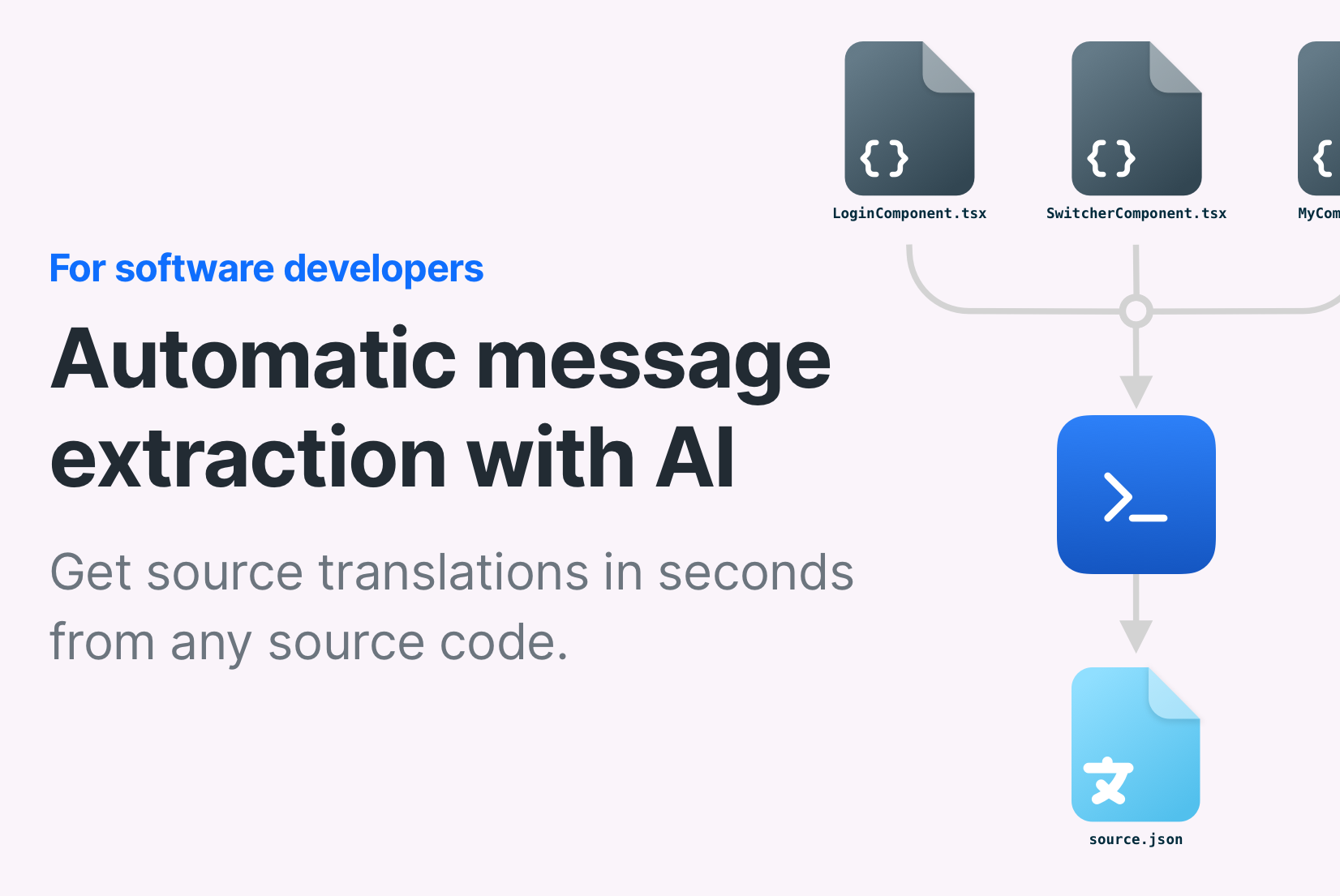How to keep translations up to date?

Software updates can be challenging, and yet with every deploy, you must remember about updating your keys, translations, and content. Keeping all text up to date is a key for a perfect impression on the released features. How do you work with translations, do you keep them up to date with every release? See our tips below for the effective translation management.
Why should you keep an eye on translations with every software update?
No one likes to read empty keys instead of clean, nicely translated texts. But there are more reasons to watch and control the translation and localization process. They are both important for the overall perception of your site's content. Why is that so?
- Untranslated keys make the worst impression of your product. Using keys and texts, you communicate with your users — missing translations give the impression of carelessness, are unprofessional. You don't want your customers to think of you and your product in such categories, for sure.
- When adding new features and translations to them, do not forget about localization. Localized text show your customers that you care. You want your software to be fully adjusted and tailored to the language they use in everyday life. Remember to adjust the content, names of the features and new options to your customers' culture.
- SEO. Not translated content or texts copied from an automatic translator are a nightmare for your Google ranking. When adding a new feature, do not forget to share it on your blog and social media too!
- Not updated translations can be misleading not only for your customers but also for you and your team. What did that “Disable All” button mean? Was it deactivating all updates or only part of them? If you are not updating texts on a regular basis, you will waste your time later to check and update all keys.
How to keep your software translations up to date?
First, plan it. Think of the translation process of your software, what are the weaknesses in your current solution, and how can you improve it? Who will be responsible for the translations, and at what stage of development? What the whole process should look like?
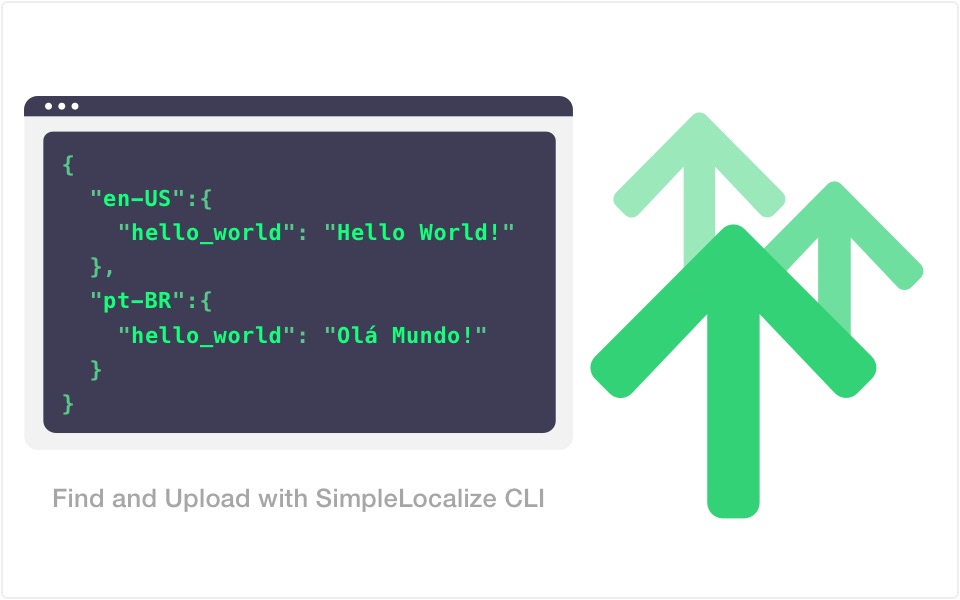
We prepared 3 tips that should help you in keeping the translation process on track.
1. Planning translation process.
When adding new content or changing existing features, you need to remember about adding and updating translations in all languages. How to keep this process in track?
The translation process needs to be controlled by a human being, though it is prone to errors or mistakes. However, to prevent any issues, make the process as easy and smooth as possible. Complicated operations, tasks in such small thing as it seems, makes the translations a secondary issue.
Start with simple steps.
- When a development team makes changes, notify the person responsible for translations about new keys to translate. It can be done by the developer with email or automatically. With SimpleLocalize, notification about a new update are sent to selected users, so they can start working on translations.
- Translator translates the changes and publish to development or live environment.
2. Updating translations.
Updating translations directly in the code may be challenging, and it means that only developers can change them. Great if they have language skills, but what if you ask a professional translator for help? Imagine updating Excel files with translations, adding it to your code, again and again when a new feature is released. Not the best and fastest option to keep the process smooth and easy.
Instead, think of using an external software to manage your translations online, in simple translation editor. SimpleLocalize is a great help for all changes in translations that can be deployed immediately to your app with SimpleLocalize CLI. You can give access to the editor to any team member to adjust translations in development environment only or in the live version. See the history of all changes, the latest releases and old text versions. Managing multiple languages in one place really helps in keeping translations up to date.
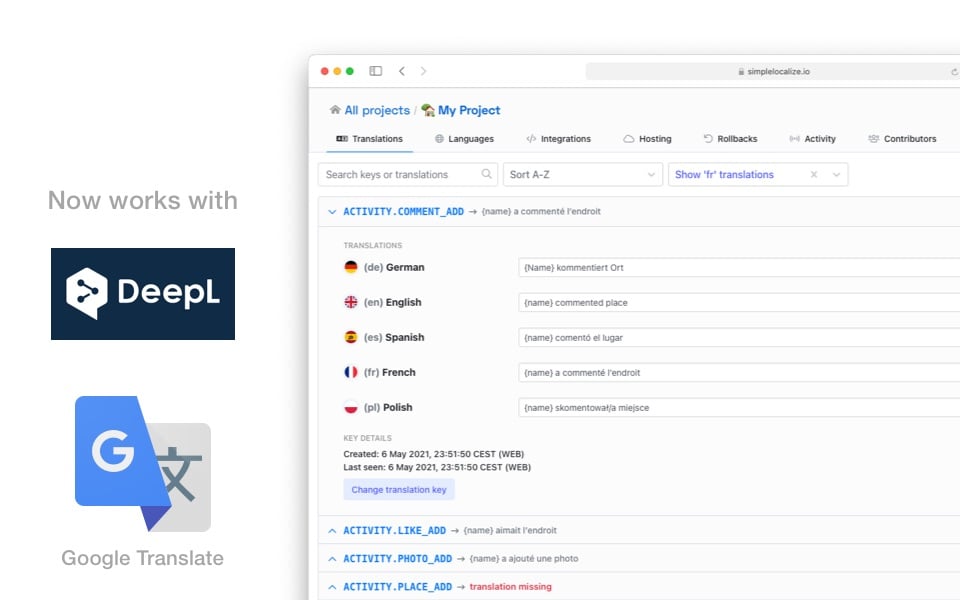
3. Checking and removing unused translation keys.
When was the last time that you deleted unused translations? Over the years of creating and developing software, we add lots of new keys. However, we tend to forget about old translations that are no longer used, and to which we are unlikely to return.
To keep translations up to date, check the age of your translations, if they are used or not updated in a long time. Outdated translations take storage and create disorder in your files. Especially when there are a bunch of such translations.
It may be difficult to check that information in the code, but in SimpleLocalize you can check not used translations or those that are not updated or pushed to live version in a long time. Just check the list and remove them from your code to clean up your software.
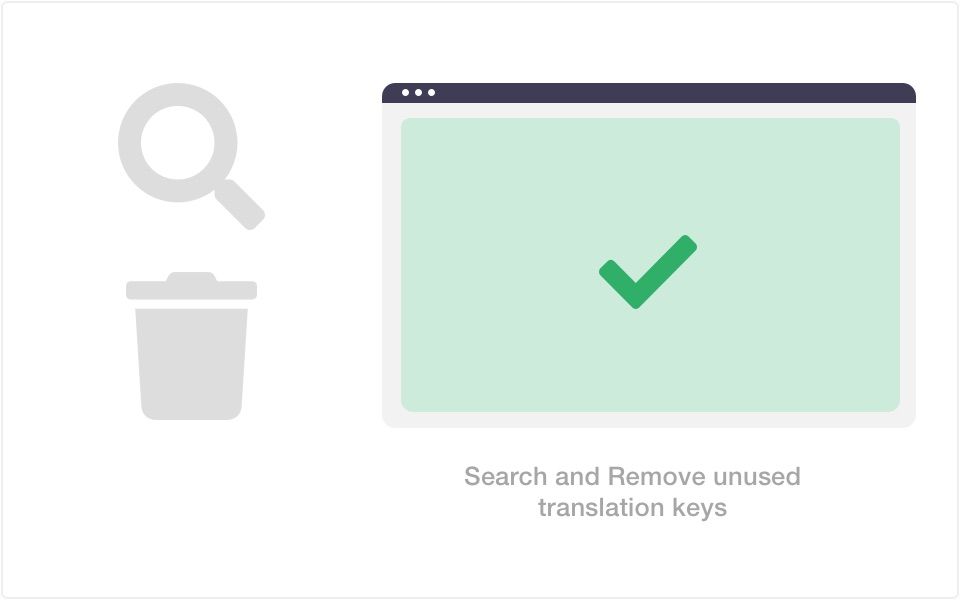
What to do next with translations?
Start simple — try the free version of SimpleLocalize to see how it can help you to manage your translations and keep them up to date. You can register to SimpleLocalize with one click and connect your project to update translations automatically in a nice-looking app. Are you ready to get started?
For any questions about SimpleLocalize, do not hesitate to contact Jakub directly, he knows it all about translations! 😎
